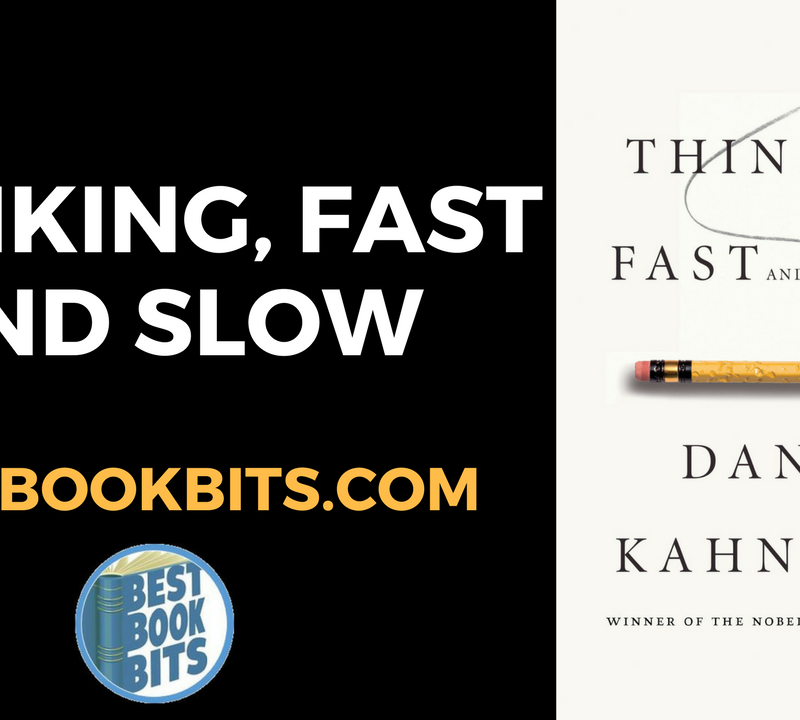★DOWNLOAD THIS FREE PDF SUMMARY HERE https://go.bestbookbits.com/freepdf
? MY FREE BOOK TO LIVING YOUR DREAM LIFE” https://go.bestbookbits.com/first-seven-steps
? SPONSOR BESTBOOKBITS BY USING PATREON https://www.patreon.com/bestbookbits
? SUPPORT BESTBOOKBITS BY CLICKING THE LINKS BELOW
150 PDF Summaries: https://go.bestbookbits.com/150
Coaching Program: https://go.bestbookbits.com/coaching
Subscribe to My Channel: https://www.youtube.com/bestbookbits?sub_confirmation=1
Website: https://bestbookbits.com
Instagram: https://www.instagram.com/bestbookbits
Spotify: https://open.spotify.com/show/0q8OW3dNrLISzyRSEovTBy
Facebook: https://www.facebook.com/michaelbestbookbits
Book Club: https://bestbookbits.com/bookclub/
Mailing List: https://mailchi.mp/d1dfc1907cdb/bestbookbits
The book in bullets
- There are many parallels between the natural sciences and commercial innovation
- Most innovations come in 6 circumstances
- Small improvements based on advances in nearby fields
- Liquid networks of connectivity allowing people to learn from others
- Hunches which slowly grow into full-fledged ideas
- Serendipity, random inputs that inspire
- Errors, not getting what you expect can be educational
- Exaptation, adapting something for another purpose
Platforms, taking advantage of another innovation to make an innovation
The model of the isolated inventor has historical validity, but over the centuries innovation is increasingly from people working in groups or networks.
While profit has always been a good motivation for innovation, more innovation may come from “open systems” because of the free flow of information that occurs in non-commercial settings.
This is a very interesting and easy-to-red book about creativity and innovation. The author identifies 7 patterns of innovation found in the human and natural world then illustrates the patterns with a variety of stories and explanations. The book is a bit of a walk through some obscure history, but this is part of what makes it fun and eye opening.
The book begins with Darwin’s visit to the Keeling Islands on his trip around the world and the observations that launched his development of the theory of evolution. In the middle of what is essentially a biological desert, coral organisms build a reef in the face if constant erosion from the waves. Each coral organism is tiny and no match for the waves, but bit by bit the organisms by working together build a structure that resists erosion overall. The coral atoll is a triumph of incremental growth, and becomes the foundation for an incredibly dense and diverse ecosystem.
This is Darwin’s paradox, diversity in a desert. Jumping ahead 100 years, Max Klieber discovered that heart rate and metabolic rate could be predicted across a huge range of organism sizes by simple negative power laws (Power_law ) which helped integrate biology and physics. Jumping ahead another 70 years, Geoffrey West led a team that showed that these same power laws applied to the “structure” of cities. Cities are like large organisms – really large ones. But some functions do not follow the metabolic power laws. For example, creativity-linked activities tend to follow positive power laws. Increase the population of a city by 10-fold, and innovation increases 17-fold.
The adjacent possible
This pattern is the pattern of incremental advance and is the dominant form of innovation. The intent is not to diminish its importance but to emphasize that few innovations are single great leaps but the accumulation of many small steps. In effect, each advance creates a new zone of possibility that can be exploited. The chapter begins with the story of the introduction of the first incubator for new born humans – based on the existing technology for raising chickens. From a simple start as a wooden box and water bottles, the modern incubator is a technological miracle.
One of the miracles is that it can’t be used in much of the developing world because the supporting technical infrastructure is absent (there is no adjacent possibility of sophisticated electronic diagnosis and repair). To remedy this, designers created an infant incubator based on car parts; these are readily available, faults are easy to diagnose, and the skills for auto maintenance are present in society (or will be until cars become too computerized).
Liquid networks
Innovation occurs when ideas meet and merge, thus innovation inevitably has an environmental/cultural component. The author uses the metaphor of chemistry in the three states of matter: gas, liquid and solid. In a gas, the molecules move chaotically and reactions are rare. In a solid, the molecules barely move at all and reactions are rare. In a liquid, molecules move easily and reactions are plentiful. More relevant to life (and the innovation metaphor), the liquid is water which has some structure and is a solvent to many other molecules. The structure of water promotes many reactions and by dissolving a wide array of molecules permits a huge range of reactions.
What the water provides is a fluid network. Similarly, organizations can be chaotic or rigid, and consequently not innovative. But an organization that provides some structure, specifically the opportunity for rapid localized restructuring may find itself more innovative. In this sense, large cities have some structure but a lot of fluidity of potential relationships. Innovative people with part of a big idea are more likely to encounter another person with a related part of the big idea – and be able to find a cheap place set up shop – and find customers – and financing – and media to advertise. These network effects support ideas colliding and then being brought to action. Naturally, there are rigid or chaotic big cities and fluid big cities – and these differ in their innovative output. Similarly, there are rigid or chaotic big organizations and fluid big organizations.
The evolution of culture in and around a big organization will have a significant impact on its innovative potential. One view of the Renaissance is that the northern Italian cities were highly connected with each other but independent, which allowed people and information to flow between them. When the first market towns emerged in Italy, they didn’t magically create some higher-level group consciousness. They simply widened the pool of minds that could come up with and share good ideas. This is not the wisdom of the crowd, but the wisdom of someone in the crowd. It’s not that the network itself is smart; it’s that the individuals get smarter because they’re connected to the network.*
The author did not address this question, but one might wonder why the Renaissance happened in the fluid city states on northern Italy, but not the more established Rome – which was much bigger and denser.
Much more recently, a study of scientists at work was conducted by placing cameras/voice recorders in their labs, offices and conference rooms. They transcribed all of their discussions and coded them for their purpose. Interviews with the scientists also recorded what they were thinking privately.
The key learning was that the most important innovative “tool” in use was the conference room because this is where the scientists discussed their observations, critiqued analyses, solved problems together and refined their thinking. While the scientists had individual creative thoughts, the semi-structured interaction with others was what fueled the thinking leaps of each person.
Most people in companies complain about meetings, but maybe meetings about innovation differ from “regular” business meetings. It would be interesting to consider the competitive advantage that a company might gain because it learned to conduct innovative meetings.
In a similar way, this section of the book suggested that big organizations can increase their innovativeness by increasing connectivity, but also implied that it is difficult or impossible to predict which connections would be beneficial. While “connection for connection’s sake” might seem wasteful, it might be the only productive approach. Finally, this section
The slow hunch and serendipity
Genuine insights are hard to come by….And so, most great ideas take shape in a partial, incomplete form. They have the seeds of something profound, but they lack a key element that can turn a hunch in to something truly powerful. And more often than not, that missing element is somewhere else, living as a hunch in someone else’s head. One of the interesting features of this book is how the story builds from chapter to chapter. Cities are liquid networks where people can exchange ideas and information. Some of what is exchanged is hunches. When you increase your network’s size and diversity, you increase the probability of meeting people with hunches that can complete your hunch and make it into something useful†.
One method of creating ideas is by forcing hunches to collide to see if they connect. These hunches are not quick insights, but hunches that develop over time as a person immerses themselves in a working domain. For example, Charles Darwin recorded in his notebooks (in 1838) that after reading an essay by Malthus on population that he had an insight into the origin of species and at last had a theory to work with. It seems like a flash of insight, but a careful study of his earlier notebooks (from 1837) show that he had all of the concepts that would become the theory of evolution for at least one year BUT HE DID NOT REALIZE IT until he read Malthus. In fact, working backwards it becomes clear that the pieces of the puzzle began to assemble a year before in his observations of reefs in the Keeling Islands (in 1836) based on his observations in the Galapagos Islands (in 1835).
This slow development of an idea, then the intellectual confirmation of that idea can be slow and must survive in the face of many challenges. Put most simply, you must remember and process the information whose importance you don’t yet recognize. The serendipity of Darwin’s observation of diversification among finches took three years to develop.
People in this time period couldn’t record things in their blogs or look in Wikipedia. The tool of choice in that day was a commonplace. A commonplace was a sort of journal where people copied passages, their own thoughts and doodles, drafted and revised essays and carried out many of the functions of a diary. Because these combined the authors own thoughts together with the thoughts of others, these mash-ups provided a way to keep memories alive and permit recombination. Darwin revisited these notebooks and kept renewing this information in his mind. These commonplaces mixed order and chaos.
Interestingly, the brain works exactly this way. There are periods when the brain’s electrical system is perfectly synchronized (REM sleep for example), but there are periods when the electrical system looks like pure noise. Interestingly, it seems that brains with longer periods of chaotic behavior score higher on IQ tests. The thought is that these chaotic periods are when the brain makes new neural connections and thus combines new information into a hunch. In this sense, the brain is a dense liquid network which enables connections.
Supported by reading a commonplace (where the randomness resembles liquidity) and by meeting and talking with others, creativity arises from multiple layers of liquid networks interacting. Though not mentioned in this book, Thomas Edison was famous for keeping notebooks with his ideas, theories and speculations. He dedicated 20 minutes a day to looking at old notebooks and of course was inventor or co-inventor of more than 1000 US patents. The World-wide web originated from the slow development of a commonplace by Tim Berners-Lee, and today the Web is the greatest (and messiest) commonplace in history. There are now IT tools that help you search web pages for “interesting” content and allow you to fuel your serendipity.
The author takes time to discuss how systems can be designed to foil the realization of hunches. Two different FBI offices in the summer of 2001 identified the possibility of terrorists high jacking a plane for use as a “bomb”. One developed from long study of terrorist thinking and the other from a particular incident. Neither were considered serious and the system used by the FBI essentially insured that the fact that there were two such hunches nearly at the same time would be ignored. It is not enough to have a hunch. There needs to be institutional understanding that hunches are the beginning of ideas and that most hunches need to find other hunches to become an actual idea. The FBI did not have that understanding, but Edison’s laboratory did. 3M and Google have it today.
Error
Often the story of an innovation is told as a series of positive steps leading to the “aha” moment and success. This probably does happen, but the more likely case is that something that went wrong, and that made somebody look again, try again and re-think their approach. In early 1900, Lee de forest was experimenting with a spark gap machine when he noticed that a nearby candle flame changed color when he created a spark. Over a few years of experimentation, he went from glass tubes filled with various gases and two electrodes to tubes with three electrodes. Pretty soon he was bending one of the electrodes inside the tube and he had the first audio amplifier suitable for use in radios.
The problem with this story is that he thought the gas in the tube was critical – but it was not (vacuum works best). He thought that the candle flame changed color because of electromagnetic radiation from the spark – but it was not (shock waves from the sound of the spark condensed the flame making it hotter). Originally an amplifier, it turned out to be a switch – and the foundation of semiconductors – which are the foundation of modern fast computers – which are the foundation of the digital revolution. De Forest later admitted that almost every theory that he had about how his device was working was wrong, but that failure never stopped the work from proceeding. The origin stories of antibiotics, photography, pacemakers, the discovery of oxygen, the Big Bang and Teflon all include some significant failure event. What is significant in these stories is that somebody eventually perceived the event not as a mistake, but as an observation.
In the section on liquid networks above the recording of scientists’ meetings were discussed. One interesting observation of the scientists at work was that when a scientist reported on an experiment gone wrong, their usual explanation was that they had made a mistake. But others, who were not part of the experiment, would interpret the results as a novel observation and suggest experiments to confirm the new observation. Sometimes they were mistakes, but sometimes they were discoveries. Being right keeps you in place. Being wrong forces you to explore.
Charlan Nemeth conducted a psychology experiment with groups of people. In the base experiment, subjects were shown a group of slides using a basic color scheme and then asked report on the color (it was green). In a subsequent step, they were asked to free associate words based on the slides. The selection of words produced in this circumstance is highly predictable and few people produce “unusual” words in the first few minutes. In a second experiment, the subject group was seeded with a ringer who would report seeing a different color (it was blue). In the subsequent free association, groups used many more “unusual” words, apparently made more creative by exposure to bad information. Examination of other situations shows that more creative thinking occurs in environments with more “noise”, where disagreement is common, and data is not clean.
One perspective on efficiency is that perfection improves quality and efficiency. But an alternate view is that the lack of noise in a perfect environment disables our ability to make new connections or see things differently. It is the surprise that teaches us – not the confirmation of what we expect.
Exaptation
Exaptation = external adaptation; where an idea or method from one domain is applied in another domain. For example, Gutenberg adapted the wine press to work as a printing press. Exaptation is complementary to the idea of the adjacent possible. The web that exists today is exapted from the combination of a back-up telephone system developed by the military and a computer language developed to share academic data. Analogy and metaphor are tools of Exaptation.
Exaptation relates to the importance of cities in innovation. When cities grow bigger they become more diverse. A big city has more different industries and businesses than a smaller city, and more opportunities to observe other people at work.
Martin Ruef studied the social networks of Stanford Business School graduates. The most creative graduates (as measured by patents, product introduction, businesses started, etc.) generally had the most diverse networks that extended beyond their own organizations and included people with very different backgrounds. These people were able to connect a wide range of examples to their own situation, and exact solutions. Other studies show that the most innovative people within organizations often form bridges between groups and can re-apply solutions from other context into theirs.
Apple offers an interesting counter-example. Apple barely interacts with other organizations, and its leaders were not networkers. However, Apple had a practice called concurrent development where all the disciplines work on the project interact right from the beginning. Though this causes projects to start with a lot of argument and confusion, this process prevents designs from being diluted over time and allows the methods of different disciplines to fertilize each other throughout the project. Early delays are overcome by later alignment and clarity.
Centuries ago, the coffee house allowed people to meet and exchange ideas. People learned from each other and adapted ideas to their own work. The internet and Starbucks serve a similar purpose today. Liquid networks of people finding a little serendipity that allows them the exapt a solution into a nearby domain.
Platforms
Platforms represent the last big category of innovation types. A platform in this context is an innovation that spawns many more innovations. A beaver pond is a natural platform that provides an ecosystem suitable for numerous fish, amphibians, birds and plants. A technological platform example is GPS. Originally developed to help submarines locate themselves accurately, the technology has been exapted to help motorists find their way, cyclists to track their rides, and Twitter users to attach their tweets to a location. Twitter itself is an example of the intersection between existing platforms of SMS, internet on the one side and phone apps being developed by companies and users on the other side. Building Twitter from scratch would have been impractical, but building by repurposing other technologies made its development very feasible. Twitter’s developers made another crucial decision that made its platform more attractive, they open sourced essentially everything. Users developed the @ and # conventions, companies built apps. Rather than capture competitive advantage, the Twitter developers capture cooperative advantage through their platform. The book point out that technology originally developed to fight nuclear war (internet, GPS, etc) is now applied (in combination with numerous other platforms) to tell others how you enjoyed lunch on Twitter.
Stepping back
The way that innovation is explained would lead you to think that most innovation is the product of individuals’ efforts – often isolated individuals. Examination of innovations in isolation may support this view, but stepping back shows that innovation has changed over the past 500 years. You can imagine two dimensions for an innovation. The first dimension relates to how networked the inventor(s) was: small team or highly networked. The second dimension is intended purpose (profit or knowledge sharing). Simplistically, these two dimensions form a 2×2 grid like the following. Next the author examined and classified the top 200 inventions and discoveries since the printing press into one of the four quadrants over time.
Early innovation was mostly individualistic and knowledge oriented, but over time networking came to dominate both the for profit and knowledge worlds. If 66% of innovation was individualist before 1600, 32% of modern innovation is non-networked. Profit motivation has also increased overtime, though not as much (24% to 34%). Individual inventors seeking profit have never dominated the big innovations, probably because the cut themselves off from outside input while protecting their ideas from others. Most of the sources of good ideas described above require relatively open systems for people and information to interact in. The lower right quadrant is the most open of them all; characterized by open sharing through semi-formal networks, ideas and information flow allowing slow hunches to collide, solutions to be re-purposed, and platforms to be constructed.
Darwin, famous for survival of the fittest, also observed that much of life depended on complex interactions, connection, and cooperation. The resolution of Darwin’s paradox is this fact: cooperation and competition are not mutually exclusive. The reef, rain forest and big city foster exchange and permit exploration of the adjacent possible, the collision of slow hunches, and exploitation of new platforms – and competition is these places is fierce. Organizations wanting to drive innovation will want to think about how to increase “random” connection, productive errors, and slow hunches – not usually the goals of efficiency-minded organizations.
★DOWNLOAD THIS FREE PDF SUMMARY HERE https://go.bestbookbits.com/freepdf
? MY FREE BOOK TO LIVING YOUR DREAM LIFE” https://go.bestbookbits.com/first-seven-steps
? SPONSOR BESTBOOKBITS BY USING PATREON https://www.patreon.com/bestbookbits
? SUPPORT BESTBOOKBITS BY CLICKING THE LINKS BELOW
150 PDF Summaries: https://go.bestbookbits.com/150
Coaching Program: https://go.bestbookbits.com/coaching
Subscribe to My Channel: https://www.youtube.com/bestbookbits?sub_confirmation=1
Website: https://bestbookbits.com
Instagram: https://www.instagram.com/bestbookbits
Spotify: https://open.spotify.com/show/0q8OW3dNrLISzyRSEovTBy
Facebook: https://www.facebook.com/michaelbestbookbits
Book Club: https://bestbookbits.com/bookclub/
Mailing List: https://mailchi.mp/d1dfc1907cdb/bestbookbits














